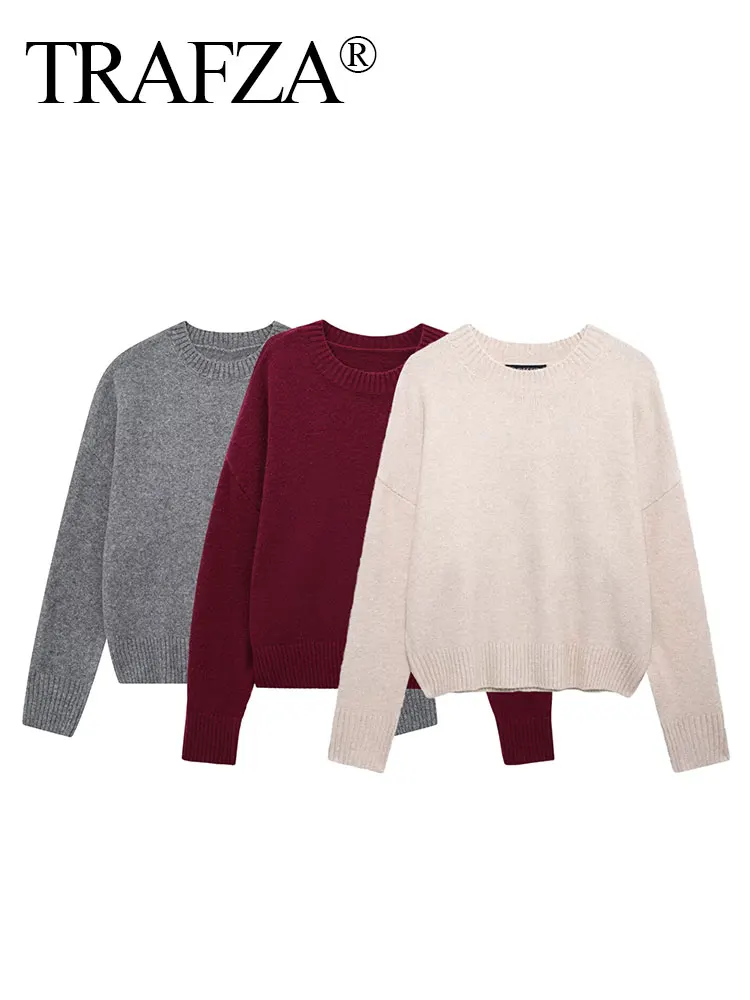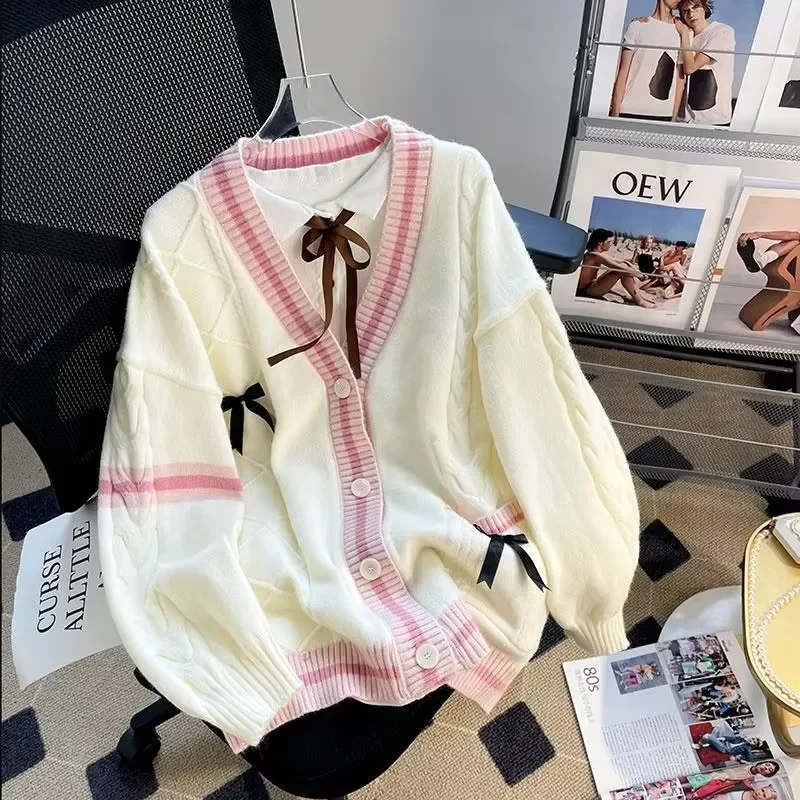The Extraordinary World of Cashmere
Cashmere stands as one of nature’s most extraordinary gifts – a premium natural fiber harvested from the soft undercoat of cashmere goats. When you touch genuine cashmere for the first time, the experience is unforgettable – a whisper-soft sensation that feels almost ethereal against the skin. This remarkable material has earned its reputation as one of the world’s most coveted luxury fibers for very good reasons.
What makes cashmere truly special is a combination of remarkable qualities:
- Extraordinary softness that far surpasses ordinary wool
- Exceptional warmth despite its incredibly lightweight nature
- Natural insulation that adapts to your body temperature
- Remarkable durability when properly cared for
The global production of cashmere represents less than 0.5% of the world’s total fiber market, making it genuinely rare. Each cashmere goat produces only a small amount of the precious undercoat annually, and the harvesting process remains largely manual and time-intensive – a tradition passed down through generations in remote mountain regions.
At Estate Cloth, we recognize that understanding the unique styling tips for cashmere cardigans begins with appreciating what makes this fiber so exceptional. Our commitment to using only premium Grade A cashmere ensures that each garment embodies the true luxury of this natural wonder. As we explore the remarkable world of cashmere, you’ll discover why this material has captivated humanity for centuries and continues to represent the pinnacle of natural luxury.
The Origin: Cashmere Goats and Their Precious Fibers
The story of cashmere begins high in some of the world’s most remote and challenging landscapes. Cashmere goats (Capra hircus) thrive in harsh mountain environments where few other creatures could survive. These remarkable animals have adapted perfectly to the extreme climates found across the high-altitude regions of Mongolia, China, Nepal’s Himalayas, and parts of Afghanistan, where elevations often reach 10,000-15,000 feet (3,000-4,500 meters).
These inhospitable environments, with their dramatic temperature fluctuations between scorching days and freezing nights, actually stimulate the development of the goats’ prized undercoat. As a survival mechanism, cashmere goats develop an extraordinary double fleece – a coarse outer layer of guard hairs that protects a remarkably fine, soft undercoat beneath. This undercoat serves as natural insulation against bitter cold, and it’s this layer that provides us with precious cashmere fiber.
The harvesting process remains largely unchanged for centuries. Each spring, as temperatures rise, the goats naturally begin to shed their winter undercoat. Skilled herders gently collect these fibers through careful hand-combing – a process that doesn’t harm the animals but requires tremendous patience and expertise. Some regions use shearing methods, but traditional hand-combing typically yields the highest quality fibers.
The harvest from each goat is surprisingly modest – just 3-5 ounces (85-140g) of usable cashmere per year. To put this in perspective, creating a single cashmere sweater requires the annual harvest from four to five goats. Compare this to a merino sheep that can produce 10-15 pounds (4.5-6.8kg) of wool annually, and you begin to understand cashmere’s inherent scarcity.
This limited supply, combined with the challenging environments where cashmere goats thrive and the labor-intensive harvesting process, forms the foundation of cashmere’s status as a truly precious natural resource.
Unparalleled Softness: The Hallmark of Cashmere
The legendary softness of cashmere is not just marketing hyperbole – it’s a measurable, scientific reality. When textile experts evaluate fiber quality, they measure diameter in microns (one micron equals one-millionth of a meter). The smaller the micron count, the finer and softer the fiber feels against your skin.
This is where cashmere truly excels. Premium cashmere fibers typically measure between 14-16 microns in diameter – an astonishing fineness that creates its unmistakable soft touch. To put this in perspective:
- Premium cashmere: 14-16 microns
- Regular cashmere: 16-19 microns
- Fine merino wool: 18-24 microns
- Regular wool: 25-40 microns
- Human hair: approximately 70-100 microns
Beyond sheer fineness, cashmere fibers have a unique structure with minimal scales on their surface compared to regular wool. These microscopic scales can cause the prickly, itchy sensation often associated with wool. Cashmere’s smoother surface creates that distinctively soft, non-irritating feel against the skin.
What’s remarkable about high-quality cashmere is that it actually becomes softer over time with proper care. The natural fibers gently relax and conform with wear, developing an increasingly luxurious hand feel – unlike synthetic materials that typically degrade with use.
The difference between cashmere grades is significant. Grade A cashmere (under 16 microns) represents the pinnacle of softness and luxury. These exceptionally fine fibers create garments with that characteristic cloud-like feel that makes cashmere cardigans worth the investment over time. Lower grades, while still soft compared to ordinary wool, simply cannot match the sensory experience of premium cashmere.
Exceptional Warmth-to-Weight Ratio: Nature’s Insulation
One of cashmere’s most remarkable qualities is its extraordinary ability to provide exceptional warmth without bulk or weight. This unique property stems from the fiber’s evolutionary purpose – protecting cashmere goats from extreme temperature fluctuations in harsh mountain environments.
The science behind this exceptional insulation lies in cashmere’s unique fiber structure:
- Hollow core fibers create microscopic air pockets that trap body heat
- Natural crimp (waviness) in the fibers enhances this insulating effect by creating additional tiny air spaces
- Fine diameter allows more fibers per garment, creating more heat-trapping pockets
These characteristics combine to make cashmere approximately three times warmer than traditional sheep’s wool, despite being significantly lighter. A typical cashmere sweater weighs just 4-6 ounces (115-170g), while a comparable wool sweater might weigh 8-10 ounces (225-285g) or more.

This remarkable warmth-to-weight ratio makes oversized cashmere sweaters particularly desirable – they provide substantial warmth without the heaviness or bulkiness of other materials. The lightweight nature allows for comfortable layering, making cashmere ideal for both cold weather protection and transitional seasons.
For practical everyday wear, this means cashmere provides cozy warmth without the restrictive feeling of heavier materials. Whether you’re wearing a fine cashmere cardigan or a substantial turtleneck, the material adapts to your environment while maintaining exceptional comfort.
Breathability and Moisture Management
Beyond its remarkable softness and warmth, cashmere possesses another quality that elevates it above synthetic alternatives: exceptional breathability and moisture management. These natural properties make cashmere comfortable across varied temperatures and activities.
Cashmere fibers are hygroscopic – they can absorb significant moisture (up to 30% of their weight) without feeling wet to the touch. This remarkable quality comes from the fiber’s unique molecular structure, which allows it to:
- Absorb perspiration away from the skin
- Evaporate moisture gradually to the outside environment
- Maintain thermal regulation during this process
This natural wicking action creates a microclimate between your skin and the garment that helps regulate body temperature. When it’s cold, the fibers retain warmth; when temperatures rise, the moisture-wicking properties help prevent overheating.
Unlike synthetic materials that can trap perspiration against the skin, cashmere’s natural breathability makes it suitable for surprisingly diverse conditions. This adaptability helps explain why cashmere cardigans can be styled for versatile looks across seasons – from winter layering to cool summer evenings.
The practical benefit is year-round comfort. A lightweight cashmere layer can provide just enough warmth on a spring evening, while a heavier cashmere garment creates substantial warmth without the stuffiness often associated with synthetic insulators in winter.
This combination of warmth and breathability reflects cashmere’s natural origins – developed by mountain goats that needed protection from harsh cold while preventing overheating during activity. This balance of seemingly contradictory properties is part of what makes cashmere truly special among natural fibers.
Durability and Resilience: Investments That Last
Despite its reputation for delicacy, high-quality cashmere is remarkably durable when properly cared for. The finest cashmere garments often become family heirlooms, maintaining their beauty and function for decades – a stark contrast to today’s disposable fashion culture.
This longevity stems from several intrinsic properties of premium cashmere fibers:
- Natural elasticity that allows fibers to stretch up to 40% without breaking
- Remarkable resilience that helps garments return to their original shape
- Resistance to pilling when fiber length and quality are superior
The key factors that determine cashmere’s durability include:
- Fiber length: Longer fibers (36mm+) intertwine more securely, creating more stable fabrics that resist pilling and maintain their structure over time.
- Ply construction: Two-ply yarns, where two strands are twisted together, offer an ideal balance of softness and durability for most garments. Four-ply constructions provide exceptional strength for heavier items.
- Processing quality: Careful sorting, dehairing, spinning, and finishing significantly impact the final garment’s longevity.
Understanding the differences between hand washing versus dry cleaning cashmere is essential for maintaining this natural durability. With proper care, premium cashmere garments often last 10+ years while maintaining their luxurious qualities – and some even improve with age as the fibers relax and develop an increasingly soft hand feel.
This enduring quality challenges the misconception that cashmere is simply too delicate for everyday wear. While it requires more thoughtful care than synthetic alternatives, its remarkable longevity makes it an investment rather than merely an expense.
The Luxury Factor: Why Cashmere Commands Premium Prices
The significant price difference between cashmere and other materials often raises questions about value. Understanding the factors behind cashmere’s premium status helps explain why this extraordinary fiber commands higher prices in the marketplace.
Several interconnected elements contribute to cashmere’s luxury positioning:
- Extreme scarcity: Cashmere represents less than 0.5% of global fiber production. The annual global harvest of cashmere would fit inside a single large cargo ship.
- Labor-intensive collection: The gentle hand-combing process requires skilled herders and cannot be fully mechanized without sacrificing quality.
- Complex processing requirements: Converting raw cashmere into finished garments involves numerous specialized steps:
- Sorting and grading the fibers by quality, color, and length
- Dehairing to separate the fine undercoat from coarser guard hairs
- Washing to remove natural oils and impurities
- Dyeing using specialized techniques for natural fibers
- Spinning into yarn of appropriate weight and ply
- Knitting or weaving with careful tension control
- Multiple quality control inspections throughout

The grading system for cashmere significantly impacts quality and price. Grade A cashmere (under 16 microns with fibers exceeding 36mm) represents the pinnacle of luxury and commands the highest prices. This superior grade is used exclusively in women’s cashmere cardigans and other premium garments where exceptional softness and durability are essential.
From mountain goat to finished garment typically requires 6-8 months of specialized processing. Each step demands specific expertise, often involving techniques refined over generations. This combination of scarcity, labor-intensive collection, complex processing, and generational craftsmanship creates the foundation for cashmere’s enduring luxury status.
Cashmere Wrap Sweaters, Women's Cashmere Pullovers
$75.89 Select options This product has multiple variants. The options may be chosen on the product pageCashmere Cable Knit Sweaters, Women's Cashmere Pullovers
Price range: $111.82 through $112.93 Select options This product has multiple variants. The options may be chosen on the product pageCropped Cashmere Sweaters, Women's Cashmere Pullovers
$155.77 Select options This product has multiple variants. The options may be chosen on the product pageOversized Cashmere Sweaters, Plus Size Cashmere Sweaters, Women's V-Neck Cashmere Sweaters
$136.87 Select options This product has multiple variants. The options may be chosen on the product page- Price range: $108.11 through $130.03 Select options This product has multiple variants. The options may be chosen on the product page
Striped Cashmere Sweaters, Women's Cashmere Pullovers
$139.68 Select options This product has multiple variants. The options may be chosen on the product page
Cashmere vs. Other Premium Fibers: A Detailed Comparison
To truly appreciate what makes cashmere special, it helps to understand how it compares to other premium natural fibers. Each luxury fiber offers distinct advantages, but cashmere’s unique combination of properties creates its special position in the textile hierarchy.
| Characteristic | Cashmere | Merino Wool | Alpaca | Mohair | Silk |
|---|---|---|---|---|---|
| Fiber Diameter | 14-19 microns | 18-24 microns | 20-30 microns | 23-40 microns | 11-12 microns |
| Warmth | Exceptional | Very Good | Excellent | Good | Moderate |
| Weight | Very Light | Light | Medium | Medium | Very Light |
| Softness | Exceptional | Very Good | Good | Moderate | Excellent |
| Durability | Good (with care) | Excellent | Excellent | Very Good | Moderate |
| Breathability | Excellent | Very Good | Good | Moderate | Excellent |
| Hypoallergenic | Highly | Moderately | Highly | Moderately | Moderately |
| Price Range | Very High | Moderate-High | High | Moderate-High | High |
While merino wool offers excellent performance for active wear and outdoor activities, cashmere provides superior softness and a lighter weight for elegant everyday comfort. Alpaca delivers exceptional warmth for severe cold but lacks cashmere’s next-to-skin softness. Mohair offers distinctive texture and durability but can’t match cashmere’s fine hand feel. Silk provides unmatched lightness and luster but doesn’t offer the same warmth.
Understanding the differences between Mongolian versus Scottish cashmere and other regional variations reveals how geography, climate, and processing traditions influence fiber characteristics. The ideal choice depends on your specific needs, but cashmere’s unique combination of extraordinary softness, exceptional warmth-to-weight ratio, and natural temperature regulation makes it particularly well-suited for luxurious everyday wear.
Identifying Quality Cashmere: What to Look For
With the growing popularity of cashmere has come an unfortunate increase in lower-quality products that don’t deliver the true cashmere experience. Learning to identify genuine quality cashmere helps ensure you receive the exceptional performance and longevity that justifies its premium price.
When evaluating cashmere quality, focus on these key indicators:
- Fiber Fineness: Premium cashmere (Grade A) measures under 16 microns, creating that characteristic cloud-like softness. Lower grades feel noticeably less soft against the skin.
- Fiber Length: Longer fibers (36mm+) create more durable fabrics with significantly less pilling. Short fibers may feel soft initially but quickly deteriorate with wear.
- Construction: Examine stitching density and evenness. Quality cashmere has tight, consistent stitching with clean finishes at seams and edges.
- Hand Feel: Beyond softness, quality cashmere has a distinctive weight and drape. It should feel substantial despite its lightness.
- Surface Appearance: Look for a subtle luster rather than a shiny surface, which often indicates synthetic blending or excessive processing.

Watch for these warning signs of inferior cashmere:
- Excessive initial shedding (some is normal, but significant fiber loss indicates poor quality)
- Immediate pilling after minimal wear
- Rough or scratchy feel, especially at the neck or wrists
- Overly lightweight or “hollow” feeling fabric
- Uneven coloration or dye absorption
When shopping for specific styles like cashmere turtlenecks, pay special attention to the neck area, which should maintain its shape without stretching or irritating sensitive skin. Quality cashmere has a substantial feel despite its lightness – it drapes beautifully rather than hanging limply.
A simple test: gently pinch and roll the fabric between your fingers. Superior cashmere springs back quickly without excessive fiber shedding. Another indicator is a subtle “halo” effect when viewed in good lighting – a soft surface bloom that develops naturally from the fine fibers.
Caring for Your Cashmere Investment
Proper care dramatically extends the life of your cashmere garments, enhancing their natural properties and preserving their luxurious feel for years. While cashmere requires more thoughtful maintenance than synthetic materials, the care routine is simpler than many people expect.
Hand Washing (Recommended Method)
– Use lukewarm water (not hot) with a mild detergent specifically formulated for wool/cashmere
– Gently swish the garment without rubbing or wringing
– Soak for 10-15 minutes, then rinse thoroughly with cool water
– Press water out gently without twisting or wringing
Drying Properly
– Lay flat on a clean, dry towel
– Gently reshape to original dimensions
– Roll in the towel to remove excess water
– Transfer to a fresh towel and dry flat away from direct heat or sunlight
– Never hang wet cashmere as it will stretch
Storage Essentials
– Always store clean cashmere (even minor stains attract moths)
– Fold rather than hang to maintain shape
– Use acid-free tissue paper between folds for long-term storage
– Add cedar blocks or lavender sachets as natural moth deterrents
– Store in breathable cotton bags, never plastic
Addressing Pills
– Some pilling is natural, especially in high-friction areas
– Remove pills gently using a specialized cashmere comb or pill remover
– Never use regular razors or scissors which can damage fibers
Learning how to properly care for your cashmere empowers you to explore the many stylish ways to wear cashmere cardigans without worry. With attentive care, these investment pieces will maintain their beauty and comfort for many years, often becoming more personal and characterful with time.
Sustainable and Ethical Cashmere: A Growing Priority
As consumer awareness grows, the cashmere industry faces important questions about sustainability and ethical production. Traditional cashmere harvesting supported nomadic communities for centuries through harmonious relationships with the land. However, increased global demand has created new challenges that responsible producers are working to address.
Key concerns in cashmere production include:
- Environmental impact: Overgrazing by expanded goat herds has contributed to grassland degradation and desertification in some regions
- Animal welfare: Ensuring humane treatment during the harvesting process
- Community impact: Fair compensation and working conditions for herders and processors
Significant progress is emerging through several important initiatives:
- The Good Cashmere Standard: Focuses on animal welfare, environmental protection, and social conditions for herding communities
- Sustainable Fibre Alliance (SFA): Works to restore grasslands while supporting traditional herder livelihoods
- Textile Exchange standards: Provides guidelines for responsible wool and cashmere production globally
Innovation is also driving positive change:
– Regenerative grazing practices that actually improve grassland health
– Recycled and upcycled cashmere that gives new life to existing fibers
– Blending techniques that maintain luxury while reducing environmental footprint
Understanding various ethical cashmere certifications helps consumers make informed choices. Estate Cloth embraces sustainability through a quality-over-quantity philosophy – creating timeless designs built to last for years rather than following disposable fashion trends. This approach reduces overall resource consumption while providing superior value.
The most sustainable cashmere garment is one that remains beautiful and functional for many years – reducing the need for frequent replacement and minimizing long-term environmental impact.
Why Cashmere Remains Timeless in a World of Fast Fashion
In an era dominated by disposable fashion, cashmere stands as a compelling alternative – a material that actually improves with age when properly cared for. Its enduring appeal stems from a remarkable combination of qualities that synthetic alternatives simply cannot replicate.
Cashmere transcends trends through its:
- Unparalleled softness that provides lasting comfort
- Exceptional warmth without bulk or weight
- Natural breathability that adapts to your body
- Resilience that allows garments to maintain their beauty for years
This combination creates versatility that few other materials can match – equally appropriate for a business meeting, special occasion, or casual weekend. While fashion trends come and go, a well-made cashmere piece remains relevant and desirable season after season, year after year.
From an economic perspective, quality cashmere actually delivers surprising value despite its higher initial cost. When evaluated on a cost-per-wear basis, premium cashmere often outperforms less expensive alternatives that require frequent replacement. A well-made cashmere sweater worn 30 times a year for 10 years brings its cost-per-wear down to pennies – while continuing to provide the luxurious experience that made it special from the beginning.
Perhaps most importantly, cashmere represents a more thoughtful approach to consumption – choosing quality over quantity, and investing in pieces that bring genuine pleasure through their exceptional comfort and beauty. In a world increasingly concerned with sustainability, cashmere’s natural origins and remarkable longevity offer a model for more conscious consumer choices.
This is the true luxury of cashmere – not merely its premium status, but the enduring pleasure it brings through a harmony of natural properties that simply cannot be manufactured or replicated. It remains, quite simply, nature’s most luxurious gift.







